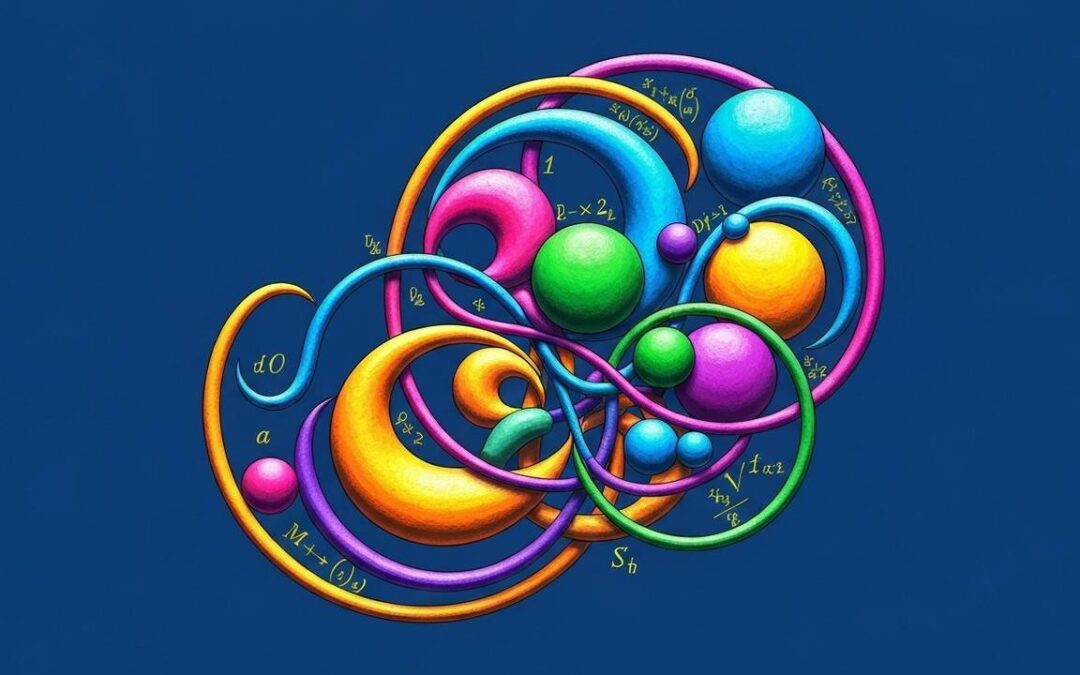The problem of calculating expected rolls to see all sides of a die is a classic probability puzzle. Many people intuitively assume that rolling more dice simply divides the expected number of rolls, but this overlooks crucial constraints. We will explore why the expected rolls for multiple dice differ from the single-die scenario. Understanding expected rolls involves concepts from Markov chains to history-dependent analysis, revealing the intricacies of probability. Let’s see why the initial intuition falls short and how to approach this problem correctly.
Table of Contents
- Understanding Expected Rolls
- Markov Chains and Expected Rolls
- History-Dependent Analysis
- Initial Rounds Analysis
- Extrapolation and Constraints
- Similar Problems on Expected Rolls
- Problem 1: Expected number of coin flips to get heads
- Problem 2: Expected number of rolls of a four-sided die to see all sides
- Problem 3: Expected number of cards drawn from a deck to see an Ace
- Problem 4: Expected number of trials to see a specific sequence in coin flips
- Problem 5: Expected number of rolls of two dice to get a sum of 7
More from me
The problem explores the expected number of rolls needed to see all sides of a die, extending the analysis from a single die to multiple dice rolled simultaneously. Understanding the nuances of probability and expectation is crucial in solving this problem, especially when considering the interplay between multiple dice. The initial intuition of simply dividing the expected rolls of a single die by the number of dice doesn’t hold, revealing deeper statistical principles at play.
Understanding Expected Rolls
For a single six-sided die, the expected number of rolls to see each side at least once is calculated using the formula ##6(1/6 + 1/5 + 1/4 + 1/3 + 1/2 + 1) = 14.70##. This is a classic problem illustrating the concept of expected value in probability. Each term in the sum represents the expected number of rolls to see a new face, given how many distinct faces have already been observed. The formula for calculating expected rolls can be applied to many different scenarios.
When two dice are rolled simultaneously, one might intuitively expect the number of rounds to be half that of a single die. However, this intuition overlooks the constraint that rolls occur in pairs. The observed difference highlights the complexities introduced when considering multiple dice and their combined outcomes. The concept of expected rolls is fundamental in probability theory and has applications in various fields, including game theory and statistical analysis.
Markov Chains and Expected Rolls
The problem can be approached using Markov chains, where the state represents the number of distinct sides observed. Calculating the exit times from each state gives the expected number of rounds to see all six numbers. This method provides a more accurate approach than simply dividing the single-die expectation. Markov chains are powerful tools for modeling systems that evolve over time, with applications in physics, finance, and computer science.
The discrepancy between the intuitive calculation and the Markov chain result arises because the number of rolls is always an integer. As Dermot Craddock pointed out, if the last number appears on an odd-numbered roll, it’s still necessary to complete the pair of rolls. This effect increases the expected number of rounds. The method of using Markov Chains helps solve the problem of expected rolls and can be used for more complex problems.
History-Dependent Analysis
A more detailed analysis requires considering the history of each round. Let ##S_k## be the total number of distinct numbers seen up to round ##k##, and ##X_k## be the number of distinct numbers rolled in round ##k##. The relationship ##S_k = X_1 + … + X_k## does not always hold, as it only provides an upper bound. This is because some rolls might duplicate previously seen numbers, especially as more faces are observed.
When ##X_k = 1##, the probability that the two dice hit an already seen number is ##(1/6)((6 – S_{k-1})/6)##, in which case ##S_k## does not increase. Similarly, even when ##X_k = 2##, the sum might not increase if both dice show previously seen numbers. This history-dependent nature complicates the calculation but provides a more accurate estimate of the expected number of rounds. This analysis provides a more accurate view of expected rolls.
Initial Rounds Analysis
In the first round, ##R_1##, there’s a ##5/6## probability of tossing two distinct numbers and a ##1/6## probability of tossing a double. Thus, ##S_1## is either 2 or 1 with these probabilities. Subsequent probabilities are conditional on these initial outcomes. Analyzing the initial rounds helps establish a foundation for calculating the overall expected value.
If ##S_1 = 1##, then in round ##R_2##, there’s a ##(1/6)^2## probability that ##S_2 = S_1## (both dice show the same number). There’s a ##2(1/6)(5/6)## probability that ##S_2 = S_1 + 1## (one die shows a new number), and a complementary probability that ##S_2 = S_1 + 2## (both dice show new numbers). This breakdown illustrates the complexity of tracking the number of distinct faces seen over multiple rounds. The concept of initial rounds analysis is important to understanding expected rolls.
Extrapolation and Constraints
Extrapolating the initial intuition to more dice leads to absurd results, such as expecting less than one roll to see all faces when using 15 dice. This highlights the flaw in the initial reasoning. Any additional constraint, such as requiring a prime number of rolls, increases the expected number of rolls. This is because constraints limit the ability to stop immediately after seeing all faces.
The fact that rolls always occur in pairs also contributes to the higher expectation. If the last number is seen on roll ##2k – 1##, the process continues to roll ##2k## times. This is equivalent to rolling the same number twice with a single die, which can be seen as wasted rolls. Understanding these constraints is crucial for a correct analysis of expected rolls.
Similar Problems on Expected Rolls
Problem 1: Expected number of coin flips to get heads
Solution: 2 flips.
Problem 2: Expected number of rolls of a four-sided die to see all sides
Solution: ##4(1/4 + 1/3 + 1/2 + 1) ≈ 8.33## rolls.
Problem 3: Expected number of cards drawn from a deck to see an Ace
Solution: Approximately 10.6 cards.
Problem 4: Expected number of trials to see a specific sequence in coin flips
Solution: Depends on the sequence; can be calculated using Markov chains.
Problem 5: Expected number of rolls of two dice to get a sum of 7
Solution: 6 rolls.
| Concept | Description |
|---|---|
| Single Die Expected Rolls | The expected number of rolls to see all sides of a single six-sided die is ##14.70##. |
| Multiple Dice Intuition | Naively, one might expect the number of rounds to be the single-die expectation divided by the number of dice. |
| Markov Chain Analysis | Using Markov chains provides a more accurate method to calculate the expected number of rounds. |
| History-Dependent Analysis | A detailed analysis requires considering the history of each round, accounting for duplicate rolls. |
| Constraints | Constraints such as always rolling in pairs increase the expected number of rolls. |
We also Published
RESOURCES
- Mathematically rigorous proof of the Expected Value of Multiple Dice …
- probability – Expected Rolls To Obtain a $6$ Given that $6$ Comes …
- Average number of rolls to get a 6… : r/learnmath
- probability – Expected time to roll all $1$ through $6$ on a die …
- probability – Expected rolls to roll every number on a dice an odd …
- Expected Number of Dice Rolls for the Sum to Reach n
- Rolls-Royce Silver Spirit II. I doubt the car expected to attack the …
- statistics – How many rolls of a D20 would you expect to equal or …
- Expected Number of Dice Rolls Until an Increasing Run of Three
- What’s the expected number of rolls until you roll the first 1? – Quora







0 Comments